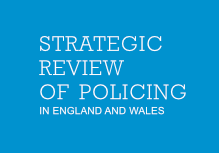Few would argue with the notion that ‘prevention is better than cure’. Politicians of all parties agree on the importance of preventing social problems escalating into crises. One would struggle to find a police force, health service or local authority strategic document that does not call for more effort to be focused on preventative work.
And yet despite this growing consensus on the need for a preventative approach, public services remain overwhelmingly oriented towards meeting acute need. For example, we spend just £5 billion a year on public health services aimed at preventing illness compared to a total National Health Service (NHS) budget of £160 billion, most of which is spent on treating people once they are sick.
In relation to public safety calls for a greater push on prevention have grown louder in recent years as the police have been faced with a growing number of so-called ‘wicked issues’, such as mental health crises, to which police officers can only ever provide a provisional solution (such as an arrest, a calming influence or a referral to another agency). Faced with this growth in complex demand, police leaders have regularly stated that “we cannot arrest our way” out of these problems. Rather these ‘wicked issues’ are thought to require early action and extensive collaboration between public agencies.
Moreover, there is strong evidence for the effectiveness of a preventative approach to crime. Between 1995 and 2019 the number of burglaries in England and Wales fell by 74 per cent. All of the academic evidence shows that the cause of this drop was improved home security, such as better locks on doors and windows. There is a similar story with the fall in car crime. Vehicle related theft in England and Wales fell by 79.5 per cent between 1995 and 2019. The cause of this decline in vehicle theft was not tougher sentences or new policing tactics, but rather the introduction of improved security measures by the car manufacturers, including immobilisers, intruder alarms, central locking, better keys and tougher doors, windows and boots.
We now face an explosion in internet related crime and harm, from fraud to online child sexual abuse. It is difficult to catch those committing these offences, given that many of them operate from overseas. The best approach to tackling these forms of crime is not by putting more bobbies on the beat but by getting serious about designing these forms of crime out at source, just as we did with car crime and burglary.
The reason we lack a systemic approach to crime and harm prevention is that no one owns the prevention task. We have a policing system and a criminal justice system, but we lack an explicit and institutionally anchored crime and harm prevention system, with clear lines of accountability, defined roles and responsibilities, budgets, priorities and supportive infrastructures.
In a paper published today as a contribution to the Strategic Review of Policing in England and Wales I set out what such a crime and harm prevention system should look like. It would have four main features. First, we need a cross-departmental strategy for crime and harm prevention that mobilises work across the whole of government. There is currently a Modern Crime Prevention Strategy, owned by the Home Office, but it is largely aspirational and as one senior police leader told the author ‘it isn’t a strategy’ because it contains no delivery plan. Instead, a strategy is required that focuses the government’s work on priority areas, sets outcomes, articulates how those outcomes will be achieved and by whom. I argue that this should be led by the Cabinet Office under the direct authority of the Prime Minister.
Second, the evidence from other sectors shows that it is important to have a flagship agency that owns the problem of prevention and is responsible for coordinating crime and harm prevention activity to ensure that strategic aims are delivered. We have a Health and Safety Executive responsible for coordinating action across industry and government to prevent accidents at work. Similarly, we ought to have a dedicated agency that would focus on crime prevention and would galvanise the necessary activity across government and wider society. In particular a national agency would be responsible for working closely with the international actors, such as the big tech companies, whose role in preventing online crime is critical.
Third, a general ‘duty to prevent crime’ should be introduced across the private sector. This would reflect the ‘polluter pays’ principle: those whose products and services are currently creating opportunities for crime would be asked to invest upfront in designing crime out at source. This could work in a similar way to the existing duty on commercial organisations to prevent bribery.
Finally, we need to repurpose the existing rather cluttered local landscape of prevention-oriented bodies and partnerships. In particular, the role of the new Violence Reduction Units should be extended to cover all local crime and all parts of the country. They should work alongside revitalised Community Safety Partnerships at town and borough level who should be given new resources and a clearer focus.
There will be resistance to some of the measures that will need to be taken to prevent crime and wider harm. There may be new checks and processes in consumer transactions. Industry will have to think more carefully about the criminogenic potential of new products. Some internet freedoms could be curtailed. All of these matters should rightly be the subject of public debate, in which the gains in terms of safety must be weighed against any losses in terms of, for example, customer convenience or internet freedom.
Whatever decisions are made about particular measures, the most important message from this paper is that we need to get serious about crime and harm prevention. And getting serious means the establishment of a proper crime and harm prevention system, anchored in actors and institutions who own the task and are focused on the job.
Dr Rick Muir, Director, The Police Foundation
